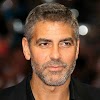Laura Lippman: By the Book
The author, most recently, of “After I’m Gone” likes books steeped in the quotidian. “You can learn how to run a chicken-and-waffle restaurant by reading ‘Mildred Pierce.’ ”
What’s the best book you’ve read recently?
My reading life is like an airport where a bunch of planes circle in a holding pattern, then — boom, boom, boom, several come in for a landing. So I have three: Helen FitzGerald’s “The Cry,” Elizabeth Hand’s “Illyria” and Tom Nissley’s “A Reader’s Book of Days.” “The Cry” tackles the toughest subject in crime fiction, the death of an infant, and it surprised me, which is rare when I’m reading crime fiction. Hand’s book is a Y.A. literary mash-up of “Flowers in the Attic” and Noel Streatfeild’s “Theater Shoes.” Nissley’s book offers monthly reading lists, and I’m a sucker for such lists. January includes H. P. Lovecraft, Zadie Smith and Arthur Hailey — what’s not to love?
Your husband is David Simon, creator of “The Wire” and co-creator of “Treme.” Do you share the same taste in literature? Has either of you opened the other up to different kinds of book or favorite authors?
I don’t read enough nonfiction, and David tends to read fiction as homework for new projects. (A bunch of books about the Spanish Civil War and the Abraham Lincoln Brigade showed up in the house recently.) But David’s reading more novels by women, and I’ve started Sheri Fink’s “Five Days at Memorial.”
Both of you are former journalists. How has that experience affected your sense of story? To what extent do your novels arise from the reporting you did at The San Antonio Light and The Baltimore Sun?
In my newspaper days, your endings could be literally sliced off in the composing room, so it was dangerous to get attached to them. Yet I think this has made me work harder on endings in fiction. Twenty years as a reporter left me with a healthy but not obsessive desire to get things right, as did Mary McCarthy’s “The Fact in Fiction,” a seminal essay for me. It also left me with a real distaste for anyone who fabricates, or passes off nonfiction as fiction, and yes, I’m sorry but that includes David Foster Wallace.
Sell us on your favorite overlooked or underappreciated writer.
Edward Eager wrote a series of children’s books that are in danger of being forgotten. But they’re divine, stories about ordinary kids who stumble on magical things — a coin, a lake, a book, a thyme garden, a well. The magic changes them, they try to change the magic, the magic moves on. Great female characters, too — strong, smart, capable, not killjoys. “Half Magic” is his masterpiece, but I have a soft spot for “Knight’s Castle,” which is set in Baltimore.
http://www.nytimes.com/2014/02/16/books/review/laura-lippman-by-the-book.html?ref=books




0 Yorumlar